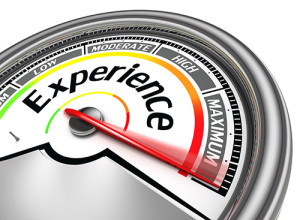The Customer Experience movement is here to stay.
Many of today’s strongest brands were built almost entirely on Customer Experience. Starbucks, Zappos, Amazon, Southwest Airlines, to name a few. As this movement spreads, large companies are creating experience managers and experience committees.
In 2012, Oracle president, Mark Hurd, analyzed the customer experience revolution. In his article, Hurd’s Top 10 Insights into the Customer Revolution, Bob Evans summarized:
- Please Don’t Feed the Competitor’s Pipeline! After enduring a poor experience, 89% of consumers say they would immediately take their business to your competitor. (Except where noted, the source for these findings is the 2011 Customer Experience Impact (CEI) Report including a survey commissioned by RightNow (acquired by Oracle in March 2012) and conducted by Harris Interactive.)
- The Addressable Market Is Massive. Only 1% of consumers say their expectations were always met by their actual experiences.
- They’re Willing to Pay More! In return for a great experience, 86% of consumers say they’ll pay up to 25% more.
- The Social Media Microphone Is Always Live. After suffering through a poor experience, more than 25% of consumers said they posted a negative comment on Twitter or Facebook or other social media sites. Conversely, of those consumers who got a response after complaining, 22% posted positive comments about the company.
- The New Deal Is Never Done: Embrace the Entire Customer Lifecycle. An appropriately active and engaged relationship, says Hurd, extends across every step of the entire processs: need, research, select, purchase, receive, use, maintain, and recommend.
- The 360-Degree Commitment. Customers want to do business with companies that actively and openly demonstrate the desire to establish strong and seamless connections across employees, the company, and the customer, says research firm Temkin Group in its report called “The CX Competencies.”
- Understand the Emotional Drivers Behind Brand Love. What makes consumers fall in love with a brand? Among the top factors are friendly employees and customer reps (73%), easy access to information and support (55%), and personalized experiences, such as when companies know precisely what products or services customers have purchased in the past and what issues those customers have raised (36%).
- The Importance of Immediate Action. You’ve got one week to respond–and then the opportunity’s lost. If your company needs more than a week to answer a prospect’s question or request, most of those prospects will terminate the relationship.
- Want More Revenue, Less Churn, and More Referrals? Then improve the overall customer experience: Forrester’s research says that approach put an extra $900 million in the pockets of wireless service providers, $800 million for hotels, and $400 million for airlines.
- The Formula for CX Success. Hurd says it includes three elegantly interlaced factors: Connected Engagement, to personalize the experience; Actionable Insight, to maximize the engagement; and Optimized Execution, to deliver on the promise of value.
 Recently, I’ve noticed a disconnect among companies outside the Fortune 500. More than once, I’ve heard managers and owners of small(er) companies proclaim: “ We already deliver superior customer service!”
Recently, I’ve noticed a disconnect among companies outside the Fortune 500. More than once, I’ve heard managers and owners of small(er) companies proclaim: “ We already deliver superior customer service!”
When referring to customer service, aren’t we most often referring to “we really know how to take care of people when things go wrong?”
In their book, The Effortless Experience, the authors executed a study that demonstrated that contact with customer service can actually create a worse customer experience. After all, your customers EXPECT you to have great customer service. In fact, for many customers, a great customer experience means never having ANY contact with your customer service.
Successful companies have come to realize customer experience reaches far beyond customer service. While customer service is about meeting customer expectations; customer experience is about exceeding those expectations.
It’s not as difficult as it seems. For example, our Stratactive 360 toolbox includes processes that help companies identify where they are strong and where they are weak in their Customer Experiences from marketing to sales to, yes, customer service.
While it’s different for every organization, I can tell you the first step is acknowledging that change is needed.
Once you’ve decided that first step, you’re ahead of your competitors. Most readers of this article will take no further action for four reasons:
- They believe they already have a remarkable customer experience. Yet, only 1% of consumers say their expectations were always met by their actual experiences. That leaves 99% of the market for you to captivate.
- “We’ve always done it this way.” Recently, Instagram sold for $1 billion dollars. Kodak no longer exists. It’s only taken 10 years for 40% of the Fortune 500 to be replaced. ‘Nuff said.
- “Our competitor does it the same way we do.” This should be included in the list of reasons why you SHOULD embrace Customer Experience.
- Change costs money. Ah…but this change makes money. Remember, according to Forrester’s research above, a Customer Experience approach put an extra $900 million in the pockets of wireless service providers, $800 million for hotels, and $400 million for airlines.
 So Customer Experience is here to stay. For the first time, buyers are in control. They’re empowered. Your customers explore, engage, shop, buy, ask, compare, complain, socialize, exchange, across multiple channels. Even more bothersome: They expect every one of these interactions to be efficient, personalized and at their whim.
So Customer Experience is here to stay. For the first time, buyers are in control. They’re empowered. Your customers explore, engage, shop, buy, ask, compare, complain, socialize, exchange, across multiple channels. Even more bothersome: They expect every one of these interactions to be efficient, personalized and at their whim.
If you can meet this seemingly insurmountable expectation, they will buy, use, engage, maintain and recommend or refer your product or service. And while competitors can imitate your product and your customer service, if done properly, they cannot imitate your Customer Experience.
While other companies are talking themselves out of this, you can own your market.
Helicx provides companies and organizations with a toolbox of processes (assessments, benchmarking and workshops) to enable them to create systems that attract and retain the best customers and the best employees. The Helicx process focuses on the business activities that most influence the customer experience such as marketing, sales, employee interactions and leadership. To see if these processes are right for your organization, take this survey.


